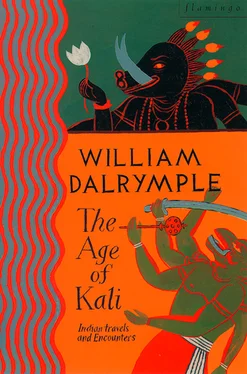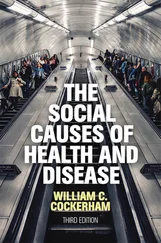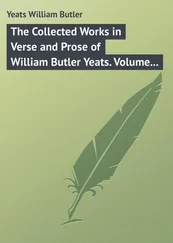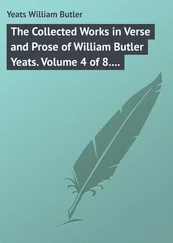The Republic of Bihar. Rosie Llewellyn-Jones provided me with invaluable contacts and advice for the Lucknow stories, as did Pankaj Bhutalia for ‘The City of Widows’, on which he has made a moving documentary. Priyath Liyanage and Abbas Nasir both helped to bring me up to date on recent developments in Sri Lanka and Pakistan. Karan Kapoor and Pablo Bartholomew between them took the pictures which originally accompanied many of the pieces in this book; they also helped set up many of the interviews, and were both wonderful – and patient – travelling companions and friends.
Mehra Dalton of the incomparable Greaves Travel arranged (and on one occasion even sponsored) the travel arrangements.
Lola Bubosh, Nick Coleridge, Jon Connel, Deidre Fernand, Ian Jack, David Jenkins, Dominic Lawson, Sarah Miller, Rebecca Nicolson, Justine Picardie, Joan Tapper, Robert Winder and Gully Wells all commissioned articles from me, and/or have generously given permission for them to be reproduced, although what is published here is in some cases very different from what originally appeared in the articles’ first journalistic avatar : pieces have been edited, trimmed and rewritten; some have been wedged together; others, where appropriate, have been suffixed with a new postscript to bring them up to date. ‘The Age of Kali’ was first published in Granta ; ‘The Sad Tale of Bahveri Devi’, ‘Caste Wars’, ‘Baba Sehgal’ and ‘Finger Lickin’ Bad’ in the Observer ; ‘Benazir Bhutto’, ‘Warrior Queen’, ‘The City of Widows’ and ‘Shobha Dé’ in the Sunday Times Magazine ; ‘Up the Tiger Path’ and parts of ‘On the Frontier’ in GQ ; ‘Parashakti’ in the Independent Magazine ; ‘Imran Khan’ in Tatler ; ‘Sati Mata’ and parts of ‘Imran Khan’ in the Sunday Telegraph Magazine ; ‘On the Frontier’ in Condé Nast Traveller ; ‘The Sorcerer’s Grave’ in Islands Magazine ; ‘At Donna Georgina’s’ and parts of ‘The Age of Kali’ in the Spectator . In all cases the copyright is retained by the original publishers, and the pieces have been reprinted with permission.
Pankaj Mishra, Patrick French, Philip Marsden, Sam Miller, Jenny Fraser and Lucy Warrack all kindly spent hours going over typescripts, while Mike Fishwick and Robert Lacey both performed sterling service with the red pen during the final edit. Mike and Robert, together with Annie Robertson and Helen Ellis, and also Renuka Chatterjee of HarperCollins India, between them provided everything an author could possibly want from a publisher. To all of them, many thanks.
Most of all I would like to thank Jonathan Bond, who has put me up, for weeks at a time, in his wonderful house in Sundernagar ever since I finally gave up my own Delhi flat. He, Jigme and Tipoo have all put up with invasions of babies, wives, ayahs , journalists, friends, colleagues and debt collectors from Airtel, at any hour of the day or night, summer or winter, with almost surreal calm and forbearance – particularly on those occasions when the babies decided to rise before the dawn and make their presence volubly known.
Finally, as always, I must thank Olivia, who accompanied me on almost all the trips, edited and helped rewrite all the articles, and who again provided all the artwork. Only she really knows how much she has done and how little I would be able to function without her. To her, Ibby and Sam, yet again: all my love …
William Dalrymple
Pages’ Yard, September 1998
1 The Age of Kali
PATNA, 1997
On the night of 13 February 1992 two hundred armed Untouchables surrounded the high-caste village of Barra in the northern Indian state of Bihar. By the light of burning splints, the raiders roused all the men from their beds and marched them out in to the fields. Then, one after another, they slit their throats with a rusty harvesting sickle.
Few of my Delhi friends were surprised when I pointed out the brief press report of the massacre, buried somewhere in the middle pages of the Indian Express : it was the sort of thing that was always happening in Bihar, they said. Two thousand years ago, it was under a bo tree near the Bihari capital of Patna that the Buddha had received his enlightenment; that, however, was probably the last bit of good news to come out of the state. These days Bihar was much more famous for its violence, corruption and endemic caste-warfare. Indeed, things were now so bad that the criminals and the politicians of the state were said to be virtually interchangeable: no fewer than thirty-three of Bihar’s State Assembly MLAs had criminal records, and a figure like Dular Chand Yadav, who had a hundred cases of dacoity and fifty murder cases pending against him, could also be addressed as Honourable Member for Barh.
Two stories I had first noticed in the news briefs of the Indian press give an idea of the seriousness of the crisis in the state.
The first was a tale of everyday life on the Bihar railways. One morning in October 1996, the Rajdhani Express from New Delhi to Calcutta made an unscheduled stop at Gomoh, a small station in southern Bihar. Mumtaz Ansari, the local Member of Parliament, got in to the first-class compartment. With him were three security guards. Neither Ansari nor his henchmen had tickets, but they nevertheless turfed out of their seats four passengers with reservations. When one of them, a retired government official, had the temerity to protest at his eviction, Ansari answered that it was he who made the laws, so he had the right to break them. When the old man continued to protest, the MP waved his hand and ordered the guards to beat him up. At the next stop Ansari was received by a crowd of supporters, including another MP and ten of his armed retainers. They dragged the retired official out of the carriage and continued the work begun by Ansari’s guards. As the train pulled out, the old man was left bleeding on the platform.
The second story was a tale of life in the Bihar civil service. In October 1994, a young graduate named G. Krishnaiah received his posting as District Magistrate of Gopalganj, a remote and anarchic district of northern Bihar. It was not exactly a dream assignment: Gopalganj was renowned as one of the most lawless areas in India, and only two weeks before, Krishnaiah’s predecessor as District Magistrate had been killed by a bomb hidden in a briefcase in his office. Nevertheless, Krishnaiah was energetic and idealistic, and he set about his new job with enthusiasm, giving a brief interview to Doordashan, the Indian state television network, in which he announced a series of measures intended to turn the area around: to control crime, generate employment and uplift the Untouchables of Gopalganj.
Watching the clip now, with the young official speaking so blithely about his intention of rooting out violence, the manner of his end seems all the more horrifying. Two months later, Krishnaiah was driving along a road at dusk when he ran in to the funeral procession of a local mafia don who had been killed in a shoot-out the day before. The procession was being led by the local MP, Anand Mohan Singh, who prior to entering politics had spent most of the previous two decades as an outlaw with a price on his head: in that time the police had registered nearly seventy charges against him, ranging from murder and criminal conspiracy to kidnapping and the possession of unlicensed arms. According to statements collected by the police, Singh ‘exhorted his followers to lynch the upstart official’, whereupon the mourners surrounded Krishnaiah’s car, and one of Singh’s henchmen fired three shots at him. Krishnaiah was badly wounded but still alive. So, encouraged by Singh, the mourners pulled him from his car and slowly stoned him to death.
Читать дальше












